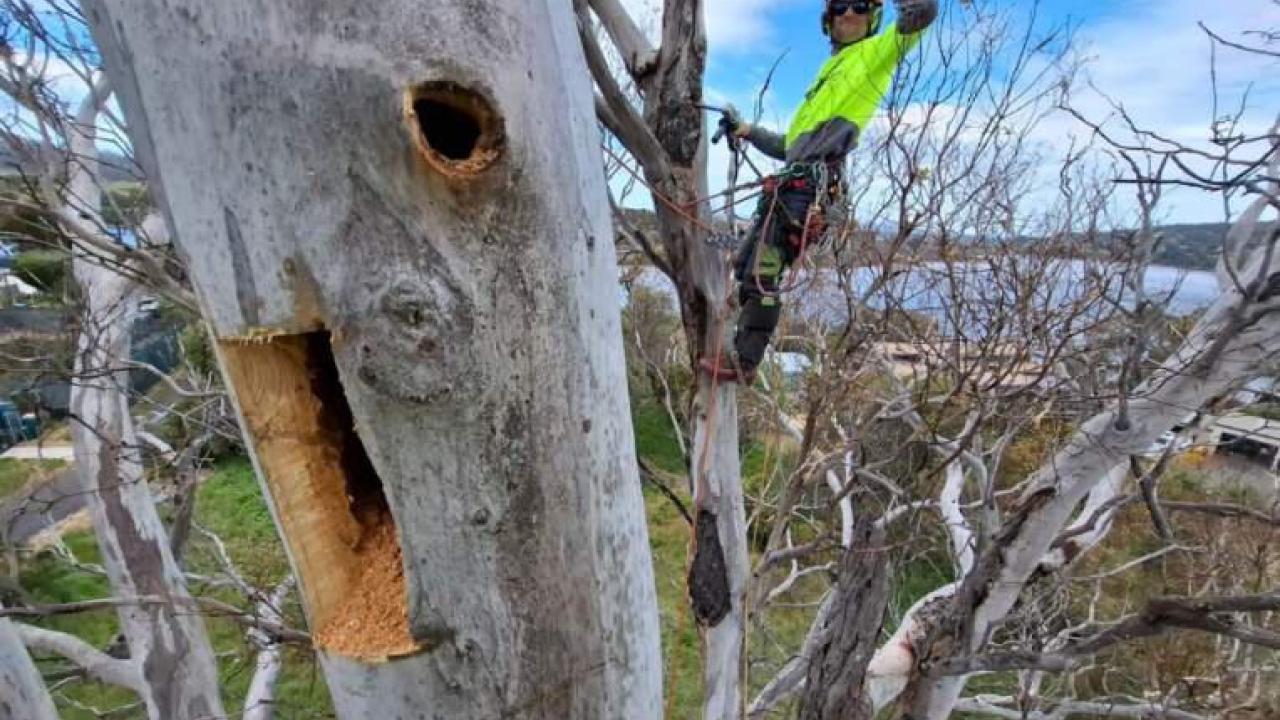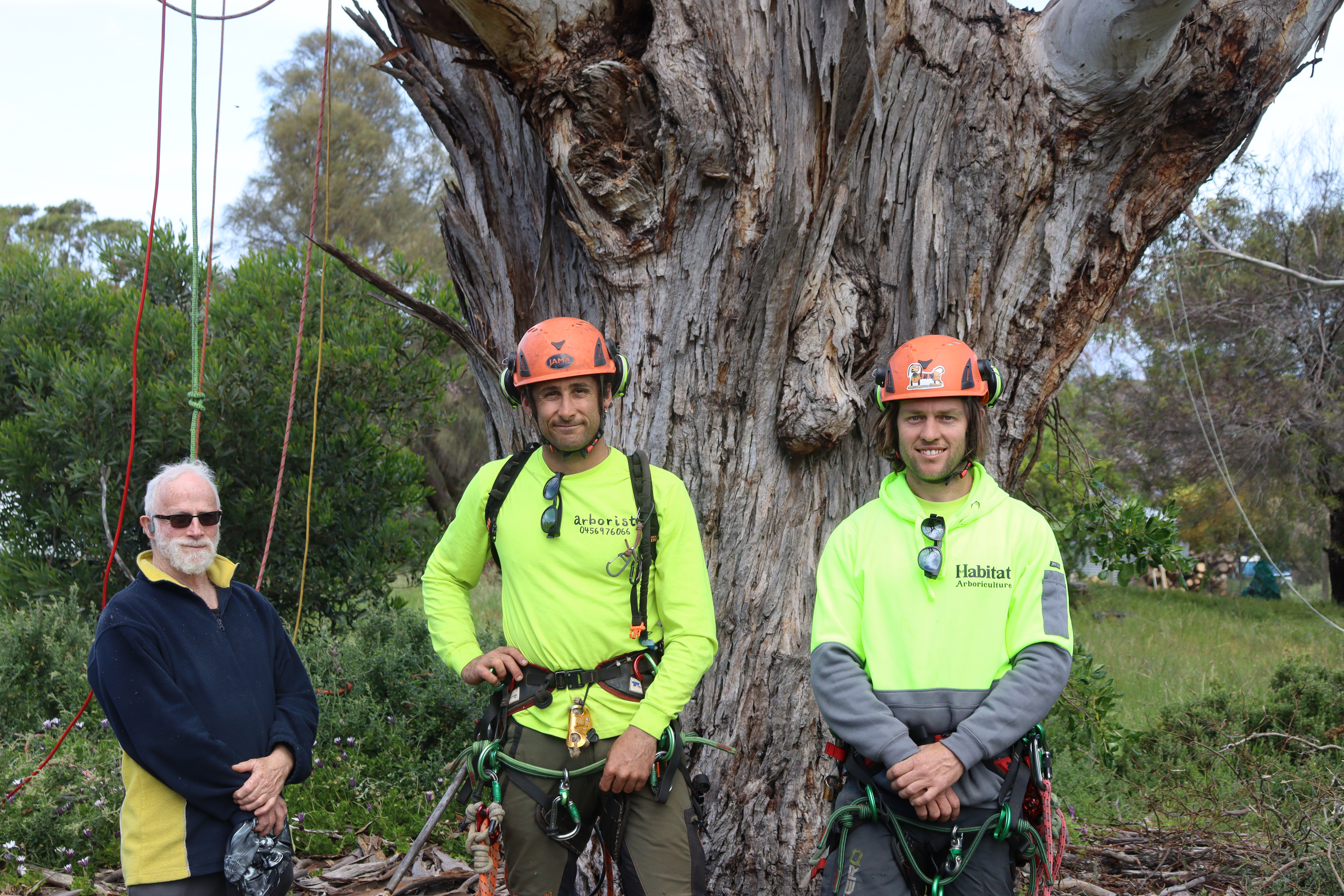Arborists creating habitats from dead trees

When Carlton River landowner and birdwatcher Craig Sajben noticed the 150-year-old eucalyptus tree on his property was dying he knew he wasn’t going to chop it down. Instead, he made a decision that would benefit both the tree and the local wildlife.
He reached out to local arborists to help turn the tree into a “hotel” for native creatures to live, find shelter and support ecology.
Mr. Sajben said it was well-known that certain species nest in tree hollows like this and he wanted to make the most of the tree on his property by not cutting it down for firewood and leave it standing as a home for animals.
Local Arborists Shaun Green and JackO’hare soon visited Mr Sajben’s property and found the eucalyptus not quite dead but in a state of decay with great potential to support local wildlife.
"When trees age, they naturally start to hollow out as part of the senescing process," Mr Green said.
He added that this takes a long time, and their job as arborists is to speed up that natural process, creating hollows that will benefit wildlife for years to come.
“We’re trying to specialise in habitat creation and tree retention so managing trees into the later stages of their lives as opposed to removing them.”
The pair worked on hollowing out specific areas of the tree to replicate the natural aging process.
“We’re essentially helping the tree age more naturally and quickly,” Mr O’hare said adding that they have likely done at least a few decades worth of hollow making in a day.
During their work, Shaun and Jack found wildlife already taking advantage of the tree’s hollows.
They found a ringtail possum nestled in one hollow and Green Rosella eggs in another.
Mr Sajben said it was great to see that the tree on his property was already providing a home to native creatures, even before the modifications.
They believe that other species, including microbats, musk lorikeets, tree martins, and owlet nightjars, will find shelter or home in hollowed tree.
By creating multiple hollows at various heights, Mr Green says they are ensuring the tree can accommodate a wide variety of animals.
The process is not as simple as drilling a few holes, there is an art to it and the arborists have taken the time to carefully carve out spaces that will attract the right species such as carving two micro bat homes and hollows perfect for nightjars.

Both arborists believe that trees like this one are at their most valuable for ecology at the end of their lives due to more limbs, more decay and more hollows for wildlife to live.
Their work also ties into a larger goal— addressing habitat loss in the area.
“Increasing the habitat around these areas is pretty important,” Mr Green said.
“Where we’d like to go with it more in the future is getting government funding to do larger scale habitat creation in areas that there’s more wildlife but less fragmented forests.”
Mr O’hare shared that habitat creation eases competition on a limited resource is important, especially when some species are more aggressive than others.
He added the work they’re doing is not only important for the animals now, but will provide ecological benefits for generations.
“I would be willing to put money that this tree will still be standing in some form when we’re all gone and even if it was a tenth of the size there would still be benefits.” Mr O’hare said.
“It’s good to be able to do things like this to speed up the ecological benefits but not have to remove the trees,” he said.
The carved hollows created in the tree will develop and change with use— the animals will chew and dig at them and different species will use them at different times in the year.
Overall Mr Sajben hopes the work being done on his property will inspire others to think creatively about the dead or decaying trees on their property and support ecology and native wildlife.




Add new comment
Comments
Article
It was most appreciated for me to have this covered in such a well written article by Bronwyn